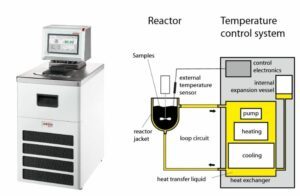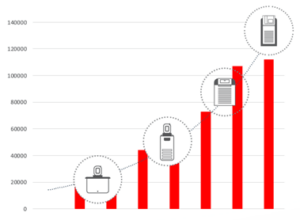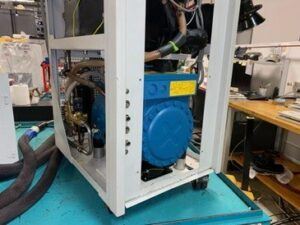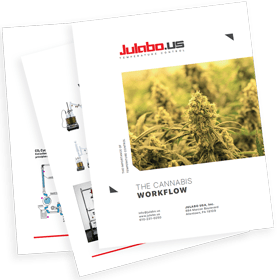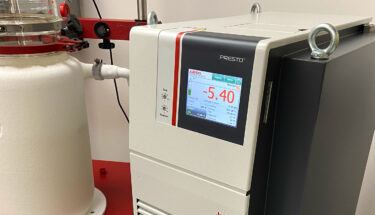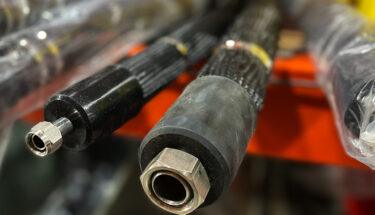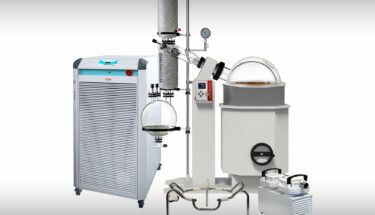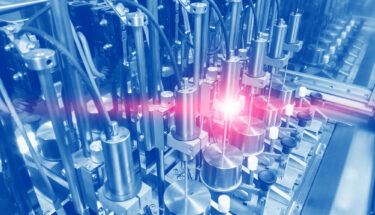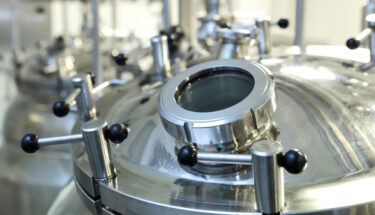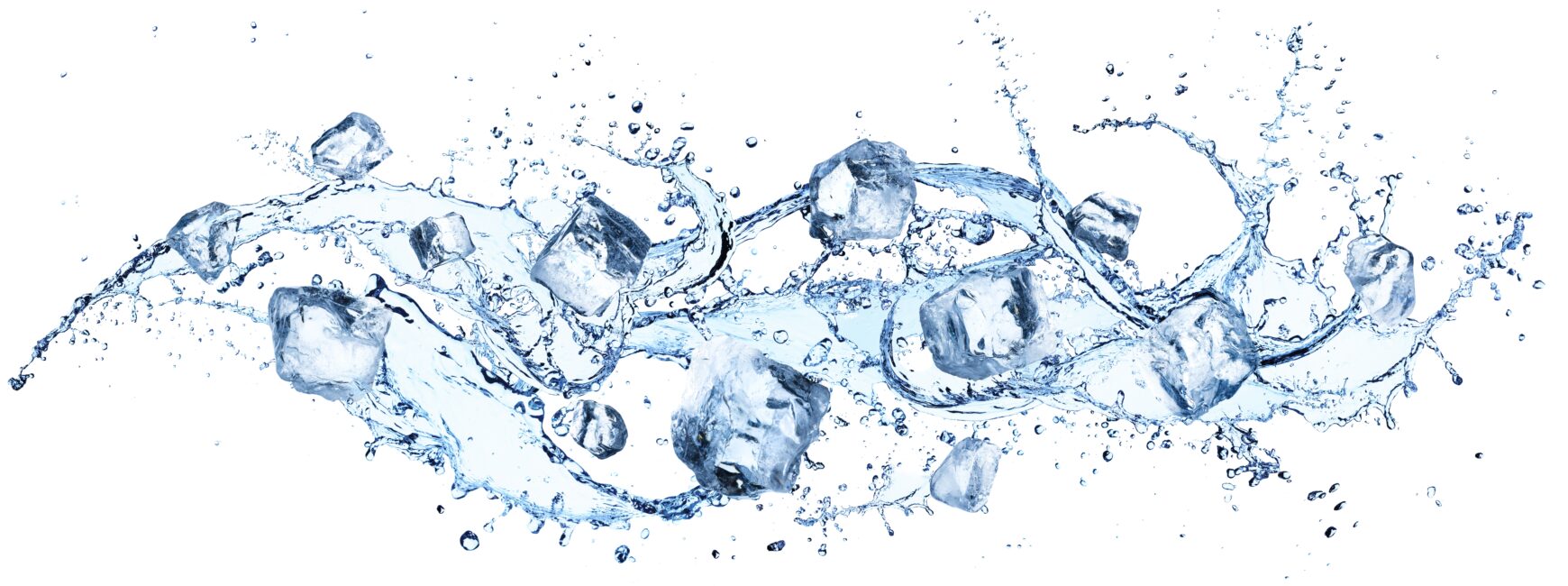
Why is Cooling More Expensive than Heating?
By Dr. Dirk Frese, Ph.D., Vice President, Sales, Marketing & Service, JULABO USA
When helping scientists and engineers with their temperature applications, we often get asked: Why is cooling more expensive than heating? This article will discuss why cooling is more expensive than heating and how to plan and budget for temperature applications that require cooling. We’ll also outline how to maximize your cooling equipment ROI to ensure a longer life cycle.
Heating & Cooling Application Expertise
“We heat things up and cool them down,”™ at JULABO USA. Our products and instruments, including water baths, thermostats, heating circulators, refrigerated circulators, and chillers, use a liquid or thermal fluid to heat and cool samples, materials, objects, and instruments in scientific and industrial labs. Numerous industries depend on liquid temperature control for their research, discovery, experiments, innovations, tests, and production.
Cooling Applications Across Industries
There are many reasons scientific and industrial labs need to cool applications. It could be to avoid run-off situations of highly reactive chemicals in a vicious exothermic reaction, an example is lithium reacting with chloride gas to form products needed in the semiconductor industry. It could be optimizing reactions for drug manufacturing in the pharmaceutical lab or maintaining a viable temperature for microorganisms in the fermenter in a biotech lab. Aviation and space tech industries need low temperature conditions to cool vacuum chambers and simulate space or stratospheric conditions. This is the case for NASA which uses JULABO instruments. Cooling is also an integral part of material testing, quality control, and botanical extractions. The list is endless and exciting as we find out new applications every day.
Planning for a Temperature Application
We work directly with scientists and engineers to heat and cool their internal and external applications. During our conversations, we’re often asked a series of questions, including:
- What should I budget to heat or cool my application?
- When should I start thinking about temperature control?
- Why is cooling more expensive than heating?
Our advice? Have a plan for your temperature control and address your needs early in the project planning. And, if you’re going to need cooling, you’ll have to budget accordingly, meaning the equipment you need will cost more than an application that only requires heat.
There are many considerations when it comes to temperature control applications. In addition to the costs of the temperature control equipment itself, you’ll also need to consider the available lab space, how you’ll set up your application, and whether you’ll need additional plumbing and electrical work. You will also want to consider other business objectives, such as what this application will do for energy and water costs.
Waiting late in the process to address your temperature control needs can lead to budget issues and sacrifice the success of your application. It’s natural to think of temperature control as an ancillary solution because the equipment supports other outcomes. However, this doesn’t mean that temperature is less critical; the temperature control unit might be the most valuable instrument in the whole setup. So, it’s always beneficial to factor in temperature control equipment selection early in the planning process.
Cooling, Thermodynamics, and the Role of Temperature Differentials
Applications that require cooling are significantly more expensive than those without cooling. In addition, the lower the desired temperature, the greater the costs. Why is this?
To understand cooling, let’s review some of the laws of thermodynamics.
A refresher on the laws of thermodynamics helps us understand that energy is conserved, and we need to add work into a system to lower its entropy. Let’s look at how this law applies when cooling a liquid into a solid. The energy required to melt ice is 334 KJ/kg, and the energy to freeze water is 334 kJ/kg. Remember that energy is always conserved according to the laws of thermodynamics. Here’s the difference: to freeze water (or change it from a liquid to a solid state) we need an icemaker or some other freezer to lower the temperature. The icemaker or freezer consumes or uses more energy (about 5kWh per 100lbs.). Energy has two forms: free available energy and useless energy in the form of heat that’s dissipated into the environment. Once the energy is used, as in the case of the freezer/ice maker, it cannot be reused to perform work. There’s a cost to using up that energy which makes it more expensive to create the ice than to melt it.
The laws of thermodynamics illustrate that it is more expensive to produce ice cubes than to melt them due to the amount of energy, precisely useless energy, required to facilitate the process.
Let’s look at an example most of us are familiar with. Depending on geography, US households spend 2/3 of the electric bill on heating and only 1/3 on cooling (exceptions occur).
How does that fit the earlier example? The reason is that the temperature discrepancy to heat in winter is roughly 40°F to achieve a pleasant room temperature. In contrast, the difference in summer is generally less, with about 10-15°F, depending on the state you live in and its climate. In addition, the HVAC system is more energy efficient than a resistance heater. Think of a simple immersion heater to make coffee on the go, the design is simple, but it consumes a lot of electrical energy.
The takeaway message is this: It depends on the temperature differential. When more energy is converted into useless energy, and the installation for heating is more straightforward, such as with baseboard heaters compared to split HVAC systems, the units with more components are much more complex and expensive to acquire and maintain.
Components needed for Cooling Applications
Cooling applications require more work and greater design sophistication. A typical circulator looks like the illustration below. (JULABO MAGIO MS-601F to the left; application with reactor in a schematic to the right):
A heat transfer fluid, such as water, ethylene glycol, or silicone oil is heated by a resistance heater, cooled by a refrigeration system, and controlled by the head (containing the electronics) and software. A pump of varying complexity pumps the fluid around: It can be a diaphragm pump, piston pump, gear pump, directly or magnetically coupled. The refrigeration system works similarly to the refrigerators we have in our homes.
It works like this:
- A refrigerant circulates through tubes
- The refrigerant is compressed by the compressor and gets hot
- It then flows through the condenser, dissipating heat into the surroundings
- Passing the expansion valve, the pressure drops, and it gets cold and partially liquefies
- The old refrigerant then circulates through the evaporator taking up the heat from the system, getting warmer and becoming gaseous
- Next it will enter the compressor again
The compressor is the engine and comparable to a car engine, as it can have somewhere between 1 piston up to 6 (in industrial systems, even more). It delivers an output between 0.5 to 10 HP in the lab scale and constantly runs at a high load. The more complex the engine, the more it will cost. The same holds for other mechanical items, such as the pump. The type of pump can also affect costs. The mechanical systems and components like condensers, electronics, and expansion valves affect the prices of temperature control systems.
How Much Can You Expect to Pay for a Laboratory Chiller or Circulator?
As we’ve illustrated, cooling equipment is more complex and needs more mechanical parts. With that in mind, you can expect laboratory and industrial chillers and circulators to range from 4 to 6 figures in US dollars. The price correlates with the target temperature (remember, the lower the temperature, the more it costs) and the cooling capacity required. The more heat the system generates, the more cooling capacity you’ll need, regardless of how low the target temperature is. Also, the volume of the testing vessel or apparatus significantly influences the cooling capacity. You can calculate these cooling capacities with our free smartphone app.
More demanding requirements need more powerful circulators and better compressors and components. These are the drivers of cost and the most vulnerable parts of the cooling system.
Typical compressor in a circulator (4 HP, 4 cylinders, -40°C):
In this image you may see the compressor in blue.
Lower Cost of Ownership for your Cooling Equipment
To get the most out of your investment, look for quality first; it will pay off. In addition to the vulnerability of the refrigeration cycle due to stress, the mechanical parts show wear and tear too. This wear and tear is unavoidable. However, the better the quality of the engine and components, the longer the system will run efficiently without downtimes.
It’s like our cars. How often do you have trouble with your car stereo? Rarely, if ever. What about the engine, the water pump, oil pump, fuel pump, crankshaft bearing, valve guides, pistons, and gaskets? These things are more likely to need maintenance and repairs as your car ages and increases its mileage. Generally, the better engines last longer and provide more power; they also drive up the costs. Still, the increased power and reliability are worth it in the long run.
Service Costs
You’ll also want to consider service costs. When we buy a car, we expect some vehicle maintenance. For example, we know we’ll have to frequently change oil and other fluids. However, this type of maintenance often gets overlooked in the lab. Regular service, preventive maintenance programs, and predictive maintenance like our JULABO Crystal service, which tests the health of your thermal fluids, can make a significant difference. Extended warranties and good transport options for your unit to and from service centers also matter. Transport damages are common when sending temperature control equipment to and from service centers. Look for Air-Ride transportation to protect sensitive refrigeration cycles, which do not do well with lots of vibration.
Coming back to vulnerabilities, we see that roughly 2/3 of all repairs we perform affect the refrigeration circuit, compared to 1/3 on heaters and electronics, which testifies to our assumptions.
Here are some more important tips. Regularly inspect your heat transfer fluid; if it is no longer clear, exchange it. Clean the vents on your temperature control units, especially at the condenser, with a vacuum cleaner and/or brush. You can watch this video to learn how to clean your temperature control unit. This little chore done once a month helps dramatically prolong the unit’s lifespan.
Summary
When it comes to getting the best ROI for your temperature control applications, you’ll want to do the following:
- Consult with a temperature control equipment manufacturer, like JULABO USA, early. Look for manufacturers that offer free consultations with chemists and scientists who understand what’s at stake.
- Buy quality products; the temperature control system affects the overall results and effectiveness of the application. Poor products can lead to downtimes, disruptions, and poor outcomes.
- Consider service plans, extended warranties (JULABO offers coverage for up to six years with JULABO Shield), and quality certifications.
- Commit to proper maintenance and regular fluid checks and changes
If you’re planning a new application, production workflow, or testing system, reach out to JULABO USA early. You can also download our app for sizing formulas and product recommendations. Our in-house application scientist, a chemist by trade, is also available for a free consultation, including conversations about complex proprietary systems. Your dedicated JULABO account manager is your primary point of contact. They will happily assist you with planning, finding equipment options, and maximizing your ROI once you have your JULABO. You can find your dedicated account manager here.
Remember, JULABO has many experts to support you in achieving your most challenging goals!
Find additional information about thermodynamics at JULABO University or through the Process Cooling webinar, which also provides CEU credits.

